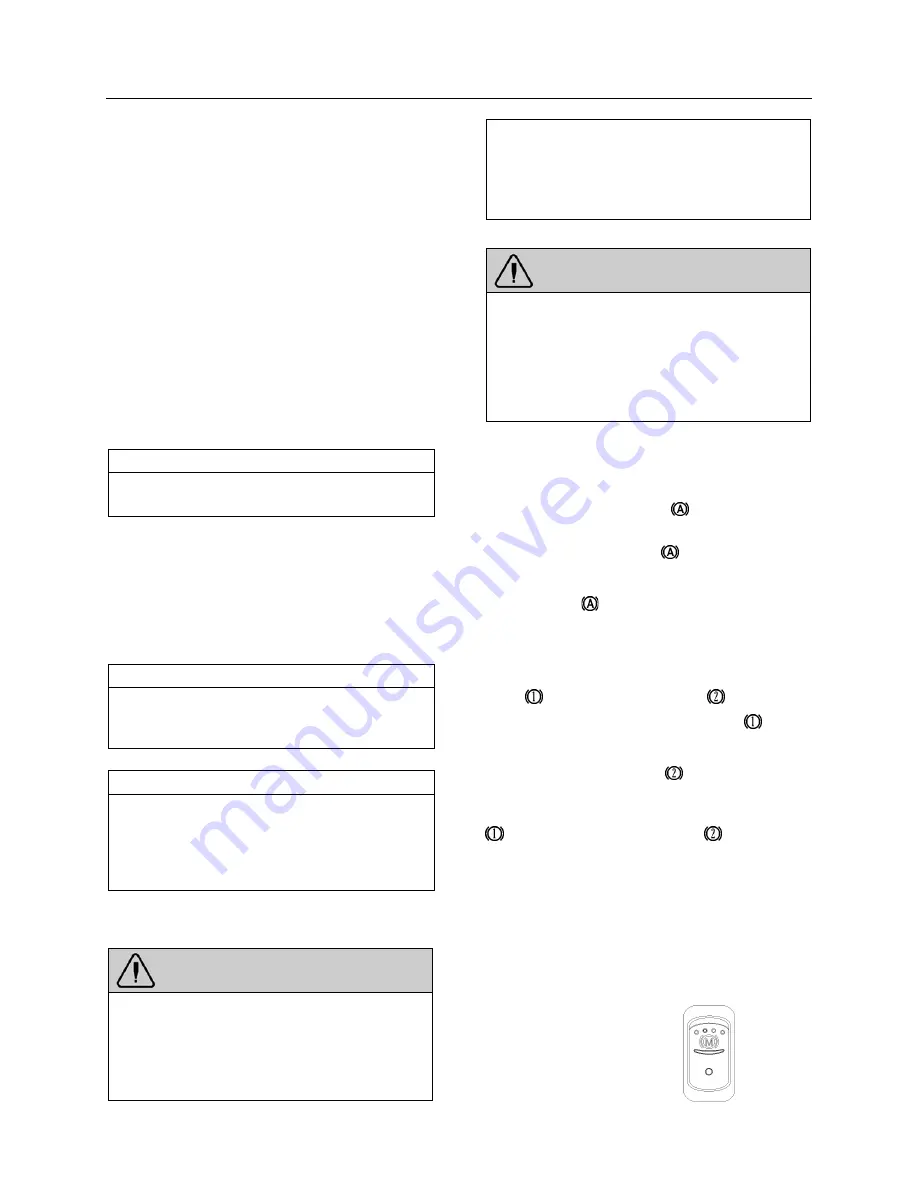
Other Features
5-22
TRANSMISSION RETARDER
The transmission retarder is an optional device
that helps to reduce the speed of a vehicle. It
improves vehicle control, increases driving
safety and permits more economical operation.
The retarder provides slowing power when it is
most needed, such as when descending
mountain roads, in stop-and-go traffic and on
crowded freeways.
The transmission retarder is a vehicle-slowing
device, not a vehicle-stopping device. It is not a
substitute for the service braking system. The
service brake must be used to bring the vehicle
to a complete stop.
The retarder is provided with control buttons on
the steering wheel and a lever on the steering
column (refer to “
CONTROLS AND INSTRUMENTS
”
chapter).
NOTE
Extended use will raise the temperature of the
transmission fluid.
The retarder helps to reduce speed on grades
without using the vehicle's conventional service
braking system. This virtually eliminates brake
overheating and reduces the risk of a runaway
vehicle. A retarder greatly increases the service
life of brake pads and discs, resulting in reduced
brake maintenance costs.
NOTE
The stoplights automatically illuminate when
the vehicle is slowing down after application of
the transmission retarder.
NOTE
For vehicles equipped with the Antilock
Braking System (ABS), as the wheels start to
lock-up on slippery roads, the output retarder
automatically deactivates until the wheels roll
freely.
ENGINE BRAKE
WARNING
A vehicle speed retarding device (such as
engine brake) is not intended to replace the
service brake systems on your vehicle nor
intended to bring your vehicle to a stop. A
vehicle speed retarding device is only
intended to reduce the speed of your vehicle
under certain conditions.
Several types of engine brake can be installed
or are standard on certain engines. All are
used to reduce wear on the vehicle brake
linings.
WARNING
When descending significant grades, use the
service brake as little as possible. If the
engine does not slow the vehicle to a safe
speed, apply service brake and shift to a lower
range. Let the engine (and engine brake) slow
the vehicle. Keep brakes cool and ready for
emergency stopping.
VOLVO ENGINE BRAKE (VEB)
On vehicles equipped with the Volvo Engine
Brake (VEB), the engine brake mode is by
default, set to the AUTO
mode at vehicle
start-up.
When running in AUTO
mode, the engine
brake is gradually applied to 100% of the braking
power when the driver
pushes the brake pedal
.
Since AUTO
mode will not reduce vehicle
momentum unless the brakes are applied, it will
have no impact on fuel consumption.
The driver can also choose two other modes
using the steering wheel switches; Engine brake
LOW
and engine brake HIGH
.
When set to the engine brake LOW
mode,
50% of the engine brake power will be applied
when the driver
releases the accelerator pedal
.
Using engine brake HIGH
will apply 100% of
the braking power.
It must be noted that since engine brake LOW
and engine brake HIGH
will reduce
vehicle speed upon release of the throttle pedal,
they may negatively impact fuel consumption if
used for extended periods of time.
On vehicles equipped with an engine brake
switch, it is possible to deactivate the engine
brake (OFF mode). To do so, the driver must
press the engine brake switch located on the left
side of the dashboard.
Engine Brake Switch
Summary of Contents for X3-45 VIP 2017
Page 1: ...Owner S MANUAL X3 45 VIP...
Page 2: ......
Page 3: ...COACH MANUFACTURER OWNER S MANUAL X3 45 VIP PA1625 Rev 2 November 2017...
Page 8: ...Foreword iv...
Page 10: ......
Page 14: ......
Page 34: ......
Page 172: ...Technical Information 9 2 VEHICLE IDENTIFICATION NUMBER VIN 12 VEHICLE FINAL RECORD 13...
Page 173: ...Technical Information 9 3 OVERALL DIMENSIONS...
Page 174: ...Technical Information 9 4 OVERALL DIMENSIONS...
Page 184: ...Technical Information 9 14...
Page 186: ......
Page 190: ......
Page 211: ......
Page 212: ......








































